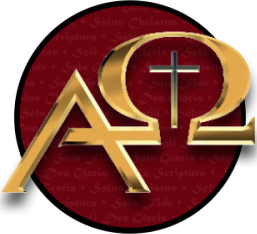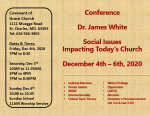Due to the hasty nature by which the early New Testament manuscripts were transmitted, it is only to be expected that errors were introduced from the earliest time. Especially in the first two centuries A. D., when there was great pressure to make copies of the various New Testament books in a short period of time, it was easy for hurried scribes to introduce many typographical errors into the text that would perpetuate with subsequent copying. Even after the establishment of Christianity under Constantine, when reproduction of the Scriptures could be conducted under more peaceful and stable circumstances, scribes were prone to err. Most works on the subject of textual criticism explore the various ways in which New Testament manuscripts were corrupted. These are just a few of the more important types of scribal error.
Faulty Vision or Hearing
Often errors crept into copies of the New Testament manuscripts simply as a result of human frailty. The person copying would see or hear (if copying by dictation) the next word, but mistake a crucial letter form or sound, replacing the original word with what he thinks it is. This would present a problem for future copyists who, without having access to the original document, would be left wondering whether the word in the manuscript in front of him was the original word. For example, in Acts 15:40, did Paul choose Silas or receive Silas before leaving? Some uncial manuscripts have the Greek word EPILEXAMENOS while others have the Greek word EPIDEXAMENOS. The former word means having chosen and the latter having received. It is evident from a careful examination of these two words how a short-sighted scribe, who would not have had the modern aid of precise glasses or contacts, could confuse one word for the other, especially when either could fit the context of the sentence. The scribe’s poor eyesight would not have been helped by the fact that the natural horizontal lines on the papyrus could affect the writing, possibly suggesting a line at the bottom of the lambda (L) making it into a delta (D), where the original scribe may not have actually written such a line.
Students learning classical or koine(New Testament) Greek today are at a disadvantage with regard to pronunciation, since the native speakers of the language did not leave a written account of the letter or word sounds. Most of the time, modern New Testament Greek instructors will present a pronunciation system that approximates the original and can help the student with learning vocabulary. For many, this is adequate since neither classical nor koine Greek function as a spoken language today. Interestingly, manuscripts from the first few centuries of the church give some indication of how koine Greek might have sounded by reasoning from some of the spelling variations. For example, the Greek words h`min (hêmin) and u`min (humin) often appear in different manuscripts in place of one another. This indicates that, at least in some regions if not generally, the Greek letters eta (h) and upsilon (u) were pronounced the same way. Since it was a common practice, especially post-Constantine, for copies of the New Testament to be made by a group of scribes writing to dictation, a scribe lacking precise enough hearing to distinguish h and u would be left making an educated guess.
Parablepsis and Homoeoteleuton
These two Greek terms refer to two similar scribal errors that are certainly not peculiar to ancient writers. Parablepsis, or looking to the side, occurs when a scribe’s eye falls on a group of words further down the page that resemble (or are identical) to the words he has just written, and continues copying from that point, skipping over the intervening line or lines. Homoeoteleuton (similar ending) is a related phenomenon where the scribe’s eye alights on a word or a line whose ending is similar to, or the same as, the ending of the word or line he has just written and he continues writing from that point. Again, the result is the omission of any text in the middle of the two similar-ending lines. Many of the differences between manuscripts due to omission of words or phrases have been ascribed to parablepsis or homoeoteleuton.
Harmonization and Conflation
From a study of the ancient manuscripts, it is clear that scribes often felt at liberty to alter the text of the New Testament from which they were copying, not out of malicious intent, but because the scribe sincerely felt that the scribe whose work he was copying had erred in his work. Perhaps he spotted what he considered to be a scribal error in the text and he sought to correct it; or perhaps he was familiar with the passage and wanted to “correct” the version in front of him according to the more familiar version. From this it can be deduced that most of these copyists were not reading these works for the first time. The fact of their familiarity with the New Testament text, along with the sense of freedom the scribe felt to correct the work of his predecessor, sheds light on the common practice of harmonization. Especially in the case of the Gospels, scribes would often feel free (maybe even obliged) to bring accounts recorded in more than one of the Gospels into line with one other. Naturally, not all scribes would feel this compulsion, and even those who did would not necessarily harmonize in the same place and in the same way. This would, therefore, generate more variations between manuscripts.
If a scribe is working from more than one manuscript, he may come across a detail in one that appears to be missing in the other, or may be different in the other. Since the scribe would probably not know the original reading, he would face the dilemma of either including or changing the original word for something else, or leaving out the original wording. Often the resolution to the dilemma was to include both readings; this way he could be sure that he was preserving the original, even if he had no way of determining which one it is. This practice is known as “conflation,” or “a conflation of readings.”
There are many more examples of scribal errors, and the reader is referred to standard works on textual criticism for more details.
Part 4: The Role of Church History in Textual Criticism–coming soon!




